Photography styling is the art of curating visuals to tell a story, balancing creativity with technical skills․ It transforms ordinary shots into extraordinary, emotionally engaging images through texture, patterns, and thoughtful composition, ensuring every element enhances the narrative and captivates the viewer․
Understanding the Importance of Styling in Photography
Styling in photography is crucial for creating visually appealing and cohesive images․ It elevates a shot from ordinary to extraordinary by ensuring every element, from textures to patterns, aligns with the theme and mood․ Proper styling enhances storytelling, making photos more engaging and professional․ By carefully curating details, photographers can convey the intended message effectively, ensuring the final result is polished and impactful․ This step transforms a simple capture into a meaningful visual experience․
Key Elements of a Successful Photography Styling Guide
A successful photography styling guide relies on several core elements․ Texture, patterns, and props add depth and visual interest, while wardrobe selection ensures cohesion with the theme․ Accessories like jewelry and fabrics enhance the look, and communication with clients guarantees alignment with their vision․ A well-prepared styling toolbox, including essentials like pins and tapes, streamlines the process․ By blending creativity with practicality, these elements create polished, professional images that captivate and tell a story, making the styling guide indispensable for photographers seeking impactful results․
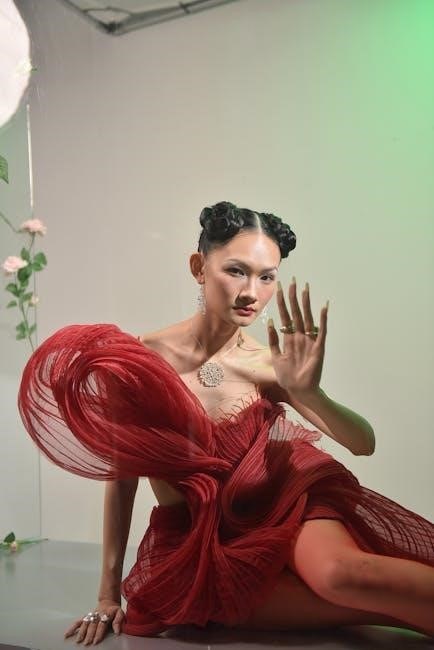
Color Coordination and Texture
Color coordination and texture are vital in photography, adding depth and visual interest․ Mixing textures like chunky sweaters, linens, and velvet creates dynamic images, while harmonious colors enhance the narrative․
Using Color Theory to Enhance Your Photos
Color theory is a powerful tool to elevate your photography․ By understanding complementary and analogous colors, you can create visually appealing contrasts or harmonious schemes․ Neutral tones like beige or gray balance bold hues, while earthy shades add warmth․ Experiment with color grading in post-processing to unify the aesthetic․ Natural light enhances color saturation, making it ideal for capturing vibrant tones․ Incorporating textures and patterns alongside thoughtful color choices adds depth, ensuring your images are both cohesive and visually striking․
Incorporating Textures for Depth and Interest
Incorporating textures adds depth and visual interest to your photos․ Mix materials like chunky sweaters, flowy fabrics, velvet, or corduroy to create contrast․ Statement jewelry, linens, and fringe can also enhance dimension․ Experiment with smooth versus rough textures or soft versus structured elements to draw the eye․ Layering textures in the foreground and background creates a dynamic, engaging image․ Use natural elements like wood or stone for authenticity, or incorporate vintage items for a rustic feel․ This technique ensures your photos are visually rich and storytelling-driven․
Mixing Patterns and Fabrics Effectively
Mixing patterns and fabrics effectively enhances visual interest in photography․ Combine stripes with floral prints or smooth textures with rough fabrics for dynamic contrast․ Use a color wheel to ensure hues complement each other, maintaining a cohesive look․ Start with a neutral base and add one or two statement patterns to avoid overwhelming the image․ Patterns and textures should tell a story, reflecting the theme and elevating the narrative․ This balance creates engaging, polished photos that capture attention and convey meaning effectively․
Wardrobe Selection and Styling Tips
Wardrobe selection is crucial for creating a cohesive look․ Choose outfits that align with the theme, ensuring comfort and style․ Opt for versatile, high-quality fabrics, and accessorize thoughtfully to enhance the visual narrative while balancing individuality and consistency in the photoshoot․
Choosing Outfits That Complement the Theme
Selecting outfits that align with the shoot’s theme ensures a cohesive and visually compelling narrative․ Opt for clothing that reflects the desired aesthetic, whether modern, vintage, or seasonal․ Consider the fabric’s texture and pattern to add depth, and ensure colors complement the setting․ Balance individuality with consistency, avoiding overly matching outfits․ Prioritize high-quality, well-fitted pieces that enhance comfort and confidence․ Use accessories sparingly to accentuate the theme without overwhelming the subject․ Remember, the outfit should enhance the story, not distract from it․
Accessorizing to Elevate the Look
Accessorizing is a powerful tool to enhance a photo’s narrative and polish the subject’s appearance․ Statement jewelry, such as bold earrings or elegant bracelets, can draw attention and add personality․ Hats, scarves, and belts are versatile options to add texture and depth․ Keep accessories simple to avoid overwhelming the frame, ensuring they complement the outfit and theme․ Balance is key—use one standout piece or layer smaller, cohesive items․ Accessories should enhance the subject without distracting, contributing to a polished, professional look․
Comfort vs․ Style: Striking the Right Balance
Striking a balance between comfort and style is essential for a successful photoshoot․ Choose outfits that are visually appealing yet allow ease of movement․ Opt for breathable fabrics and avoid overly restrictive clothing to ensure the subject feels at ease․ Layers like loose button-down shirts or lightweight scarves can enhance style while maintaining comfort․ Prioritize natural poses and confident expressions, as a relaxed subject always photographs better․ Comfort fosters authenticity, making the images more engaging and timeless․
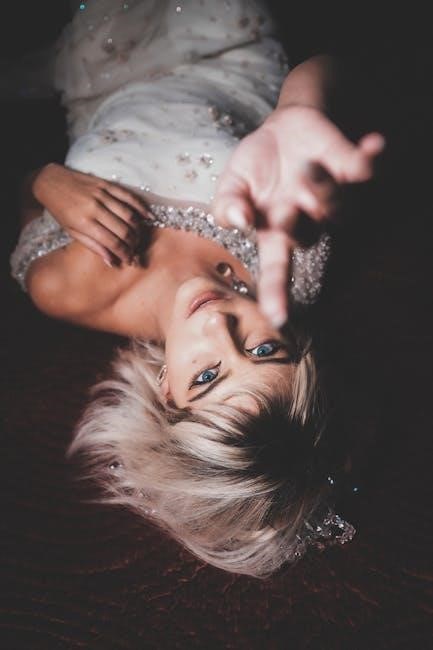
Preparation and Planning
Preparation is key to a seamless photoshoot․ Create a mood board for inspiration, gather essential styling tools, and communicate clearly with clients to ensure a cohesive vision․
Creating a Mood Board for Inspiration
A mood board is a visual tool that sets the tone for your photoshoot․ Gather images, colors, and textures that reflect your theme, helping to clarify the aesthetic and inspire creativity․ Use platforms like Pinterest or physical boards to collect references․ This step ensures everyone involved shares a clear vision, streamlining the planning process and fostering cohesion․ A well-curated mood board acts as a roadmap, guiding wardrobe choices, props, and location selections to achieve a unified style․
Essential Items in a Styling Toolbox
A styling toolbox is crucial for a seamless photoshoot․ Include items like scissors, tape, pins, and fabric steamers to make quick adjustments․ Add a sewing kit for last-minute repairs and a lint roller to remove unwanted fibers․ Styling wax or hairspray can tame flyaways, while a makeup touch-up kit ensures a polished look․ Don’t forget a color chart for coordination and fabric swatches to match textures; These tools help create a cohesive, professional appearance, ensuring every detail is perfected for the camera․
Communication with Clients for a Cohesive Style
Effective communication with clients is key to achieving a cohesive style in photography․ Discuss their vision, preferences, and expectations beforehand to align on the aesthetic․ Create a shared mood board to visualize the theme and ensure everyone is on the same page․ Regular updates and feedback during the process help refine the style․ Open dialogue fosters trust and collaboration, ensuring the final result reflects the client’s desired image while maintaining a polished, professional look․

Props and Accessories
Props and accessories add depth and context to images, enhancing the visual narrative․ Use items like vintage objects, flowers, or jewelry to complement the theme and create authenticity․
Using Props to Tell a Story
Props are essential for adding context and emotion to photographs․ They help convey themes, seasons, or personal narratives, making images more engaging․ Vintage items, seasonal flowers, or personal artifacts can evoke nostalgia or modernity․ Props should complement the subject without overwhelming it, ensuring the story remains clear․ For example, a vintage suitcase in a travel-themed shoot or a bouquet of wildflowers in a rustic setting enhances the visual narrative․ Balance is key to avoid clutter, keeping the focus on the story being told․
Floral Planning and Styling Tips
Floral arrangements can elevate a photoshoot by adding color, texture, and emotion․ Seasonal blooms often create authentic, timeless looks, while mixing high and low flowers adds depth․ Consider the theme and palette to ensure harmony․ Loose, organic styles can convey effortless beauty, whereas structured arrangements offer elegance․ Floral props like wreaths or garlands can also enhance storytelling․ Pre-planning ensures freshness and longevity, making flowers a powerful tool in capturing the desired mood and aesthetic in photography․
Incorporating Jewelry and Other Accessories
Jewelry and accessories are powerful tools for enhancing a photo’s narrative․ Statement pieces like bold earrings or layered necklaces can add personality, while simpler designs offer understated elegance․ Bracelets and rings should complement the outfit without distracting․ Hats, scarves, and belts also add depth and texture․ When styling, balance is key—avoid overwhelming the subject․ Ensure accessories align with the theme and color palette․ Practicality matters too; choose items that stay in place for candid shots, ensuring the focus remains on the subject’s expression and storytelling․

Lighting and Styling
Lighting is a cornerstone of photography styling, enhancing textures, colors, and mood․ Natural light softens features, while studio lighting creates dramatic effects․ Experiment with shadows and highlights to elevate your visual narrative without overcrowding the frame․
Understanding How Lighting Affects Styling
Lighting is a transformative element in photography styling, shaping the mood and depth of an image․ Natural light softens textures and highlights colors, while artificial lighting creates dramatic shadows and accents․ The interplay of light and shadow can enhance or diminish specific elements, guiding the viewer’s focus․ Proper lighting placement and intensity ensure that textures, patterns, and colors are showcased effectively, creating a balanced and visually engaging composition that elevates the overall aesthetic of the photograph․
Using Natural Light for Optimal Results
Natural light is a powerful tool in photography styling, offering soft, diffused illumination that enhances textures and colors․ Shooting during the golden hour (dawn or dusk) creates warm, flattering tones and long shadows, adding depth to images․ Position subjects near windows or outdoors in shaded areas to avoid harsh direct light․ Reflectors can bounce light to fill shadows, ensuring balanced exposure․ Natural light brings authenticity and elegance to photos, making it ideal for capturing intricate details and creating a cohesive, polished look that elevates the visual narrative․
Studio Lighting Techniques for Fashion Photography
Studio lighting is essential for fashion photography, offering precise control over illumination․ Softboxes create even, flattering light, while sidelights add depth and dimension․ Backlights highlight textures and separate subjects from backgrounds․ Experiment with angles and intensities to craft dynamic, high-fashion looks․ Diffusers soften harsh shadows, and reflectors bounce light to fill areas․ Studio lighting allows photographers to tailor the mood, ensuring every detail, from fabrics to features, is accentuated․ This controlled environment enables consistent, polished results that elevate fashion photography to new heights of creativity and professionalism․
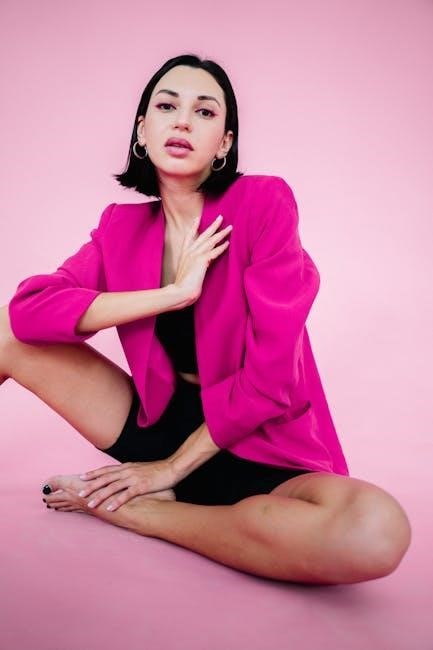
Makeup and Hair Styling
Makeup and hair styling enhance the subject’s natural beauty, ensuring a polished look․ Subtle, theme-appropriate makeup and sleek hairstyles complement the overall aesthetic, avoiding distractions and focusing on the subject’s features for a professional finish․
Making Up for Photography: Dos and Don’ts
For photography, opt for natural, subtle makeup that enhances features without overpowering the subject․ Use matte finishes to avoid shine and define eyes and brows for depth․ Avoid heavy foundation or bold lip colors that distract․ Keep hairstyles sleek and polished, ensuring they complement the theme․ Avoid over-grooming, as it can look unnatural․ Balance is key to creating a professional, cohesive look that highlights the subject’s natural beauty while aligning with the shoot’s aesthetic․
Hairstyles That Complement the Theme
Hairstyles should align with the shoot’s theme to create a cohesive look․ Opt for sleek, polished styles for modern themes or textured, undone looks for rustic settings․ Avoid overly dramatic styles that distract from the subject․ For outdoor shoots, loose waves or braids can add elegance while keeping hair manageable․ Ensure hairstyles complement the subject’s features and the overall aesthetic․ Avoid heavy styling products that weigh the hair down, and keep accessories minimal unless they enhance the theme․ Balance practicality with visual appeal for stunning results․
Enhancing Natural Beauty Through Makeup
Makeup in photography should enhance natural beauty without appearing overly dramatic․ Opt for light to medium coverage foundation to even skin tone while maintaining a natural glow․ Subtle eye makeup, defined brows, and soft lip colors create a polished yet authentic look․ Avoid heavy contours or bold statements unless the theme demands it․ Highlighting features like cheekbones and lashes adds depth without distraction․ Ensure makeup complements the subject’s natural features and the shoot’s theme, blending seamlessly into the overall aesthetic for timeless, elegant results․
Posing and Composition
Mastering posing and composition is key to creating visually appealing photos․ Use the rule of thirds, balanced poses, and natural expressions to craft engaging, professional-looking images effortlessly․
Posing Techniques for Different Body Types
Posing techniques should flatter each body type․ For petite frames, emphasize vertical lines and avoid oversized clothing․ Hourglass figures can accentuate curves with belted waists and open poses․ Athletic builds benefit from dynamic angles, while pear-shaped silhouettes balance proportions with A-line dresses or jackets․ Tall individuals can embrace flowing fabrics, and rectangular body types add softness with ruffles or textures․ Each pose should highlight strengths and create harmony, ensuring confidence and elegance in every shot․
Composition Tips for Balanced Photos
Balance in photography is achieved through thoughtful composition․ Use the rule of thirds to place subjects off-center, creating dynamic frames․ Leading lines guide the eye naturally, while symmetry adds order․ Negative space can emphasize simplicity, and framing elements enhance depth․ Avoid clutter in backgrounds and ensure lighting highlights the subject․ Experiment with angles to add interest, and always consider the visual weight of elements․ A well-balanced composition directs attention, telling a cohesive story and engaging the viewer effectively․ This ensures every photo is visually harmonious and impactful․
Working with Models for the Best Results
Working with models requires clear communication and collaboration․ Building trust and confidence is key to capturing authentic shots․ Provide detailed direction while allowing creative freedom for natural expressions․ Ensure the model feels comfortable and prepared, which enhances their performance․ Regular feedback and adjustments during the shoot help achieve the desired look․ A well-prepared stylist and a confident model create a cohesive and impactful visual story․
Location Scouting and Backdrops
Location scouting and backdrops are crucial for setting the scene․ Explore diverse areas to inspire your shots․ Use props and backdrops to add depth and create a cohesive look․
Choosing the Right Location for the Theme
Selecting a location that aligns with the theme is essential for cohesive photography․ Consider environments that reflect the mood or story you want to convey, whether urban, natural, or indoor spaces․ Ensure the setting complements the subject and style, avoiding distractions․ Scout locations in advance to assess lighting, accessibility, and permits․ The right backdrop enhances the visual narrative, making your photos more impactful and aligned with your creative vision․
Using Backdrops to Enhance the Scene
Backdrops play a crucial role in shaping the aesthetic of your photos․ Use colored paper, fabric, or vinyl rolls to create a seamless and distraction-free environment․ Natural textures like wood or stone can add warmth and depth, while custom-painted backdrops offer uniqueness․ Ensure the backdrop complements the subject’s colors and theme without overpowering it․ Experiment with lighting to enhance the backdrop’s texture and mood․ A well-chosen backdrop can elevate the scene, drawing focus to the subject while maintaining visual harmony and creativity․
Exploring Outdoor Locations for Unique Shots
Outdoor locations offer endless possibilities for creating unique and captivating images․ From natural landscapes to urban settings, each environment provides distinct textures, lighting, and mood․ Use the surrounding elements, such as architecture, greenery, or seasonal changes, to enhance your photos․ Scout locations beforehand to identify standout features and ensure they align with your theme․ Natural light, shadows, and weather conditions can add depth and character․ Embrace the unpredictability of outdoor settings to craft authentic, memorable shots that tell a compelling story․
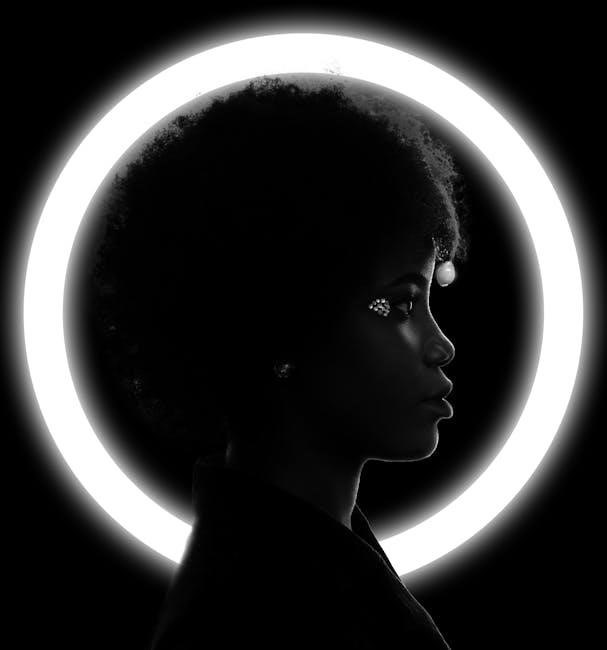
Post-Processing and Editing
Post-processing and editing are crucial for refining images, enhancing details, and achieving a cohesive visual style․ Techniques like color grading and retouching transform raw photos into polished masterpieces․
Enhancing Photos Through Editing
Editing is a vital step in refining photographs, allowing for precise control over color, contrast, and detail․ Techniques like color grading and retouching can elevate the visual appeal, ensuring consistency across images․ Adjusting exposure, shadows, and highlights helps correct imperfections and enhance the mood․ Noise reduction and sharpening further refine the quality, while subtle adjustments to saturation and vibrancy can emphasize key elements․ The goal is to create a polished, professional look that aligns with the intended stylistic vision, making every image stand out․
Color Grading for a Cohesive Look
Color grading is a powerful tool for creating a unified aesthetic in photographs․ By adjusting tones, hues, and saturation, you can ensure consistency across images․ This technique enhances the mood and emotional impact of photos, making them feel part of a cohesive story․ Whether subtle or bold, color grading helps maintain visual harmony, drawing viewers deeper into the narrative․ Tools like LUTs (Look-Up Tables) simplify the process, allowing photographers to achieve professional-grade results that align with their creative vision․
Retouching to Perfect the Image
Retouching is a crucial step in refining photographs, ensuring every detail aligns with the desired aesthetic․ It involves subtly enhancing features, removing distractions, and perfecting textures without altering the image’s authenticity․ Techniques like blemish removal, skin smoothing, and color correction are essential for creating polished, professional results․ Retouching tools like Photoshop and Lightroom offer precision, allowing photographers to achieve a balance between perfection and naturalness․ This process elevates the visual appeal of the image while maintaining its original intent and emotional impact․
Specialized Photography Genres
Explore niche styles like portrait, product, and food photography, each requiring unique styling approaches to captivate audiences and convey their distinct narratives effectively through visual storytelling․
Styling Tips for Portrait Photography
Portrait photography styling focuses on creating authentic, polished images that reflect the subject’s personality․ Choose outfits that complement the theme and harmonize with the environment․ Opt for colors that enhance skin tones and avoid bold patterns that distract․ Incorporate textures like chunky knits or smooth fabrics to add depth without overwhelming the subject․ Accessories should be subtle, drawing attention to the face․ Ensure clothing is comfortable to keep the subject relaxed, resulting in natural, genuine expressions that capture their true essence in every frame․
Product Styling for E-commerce
Product styling for e-commerce requires a balance of aesthetics and functionality to attract customers․ Use props sparingly to highlight features without distractions․ Ensure consistent branding and high-quality visuals․ Show products from multiple angles to provide a comprehensive view․ Proper lighting is crucial to showcase textures and details․ Keep the product as the focal point, and maintain a clean, professional backdrop․ This approach enhances the online shopping experience, helping customers make informed decisions and driving sales․
Food Photography Styling Ideas
Food photography styling involves creating visually appealing images that highlight the dish’s texture, color, and freshness․ Use natural light to enhance details and avoid harsh shadows․ Incorporate fresh herbs, edible flowers, or garnishes as props to add vibrancy․ Experiment with angles and styling tools like linens or ceramics to add depth․ Keep the focus on the dish, minimizing distractions․ Properly plated portions and artistic drizzles can elevate the image, making it mouthwatering and professional for e-commerce or culinary portfolios․
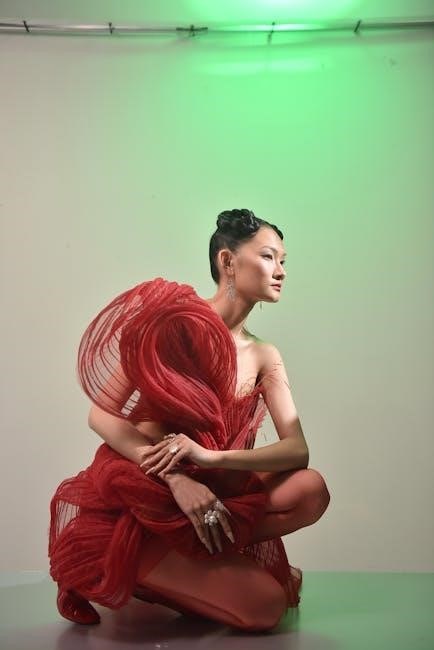
Staying Updated with Trends
Photography styling trends evolve rapidly, influenced by fashion, culture, and technology․ Stay informed through workshops, blogs, and social media to adapt and innovate your creative approach continuously․
Following Current Fashion and Photography Trends
Staying attuned to current fashion and photography trends is essential for creating relevance and modern appeal in your work․ Follow influential photographers, fashion bloggers, and platforms like Instagram and Pinterest to spot emerging styles․ Experiment with trending colors, textures, and compositions while maintaining your unique aesthetic․ Attend workshops or online courses to learn about the latest techniques and tools; By blending trend-awareness with personal creativity, you can produce fresh, contemporary images that resonate with audiences and keep your portfolio dynamic․
Experimenting with New Styles and Techniques
Experimentation is key to growth in photography styling․ Try new techniques, such as unique lighting setups or creative editing methods, to add fresh perspectives to your work․ Explore different genres and styles to discover what resonates with your vision․ Continuous learning through workshops, tutorials, and practice ensures your skills evolve․ By embracing change and exploring uncharted creative territories, you can develop a distinctive aesthetic that sets your photography apart and keeps it inspiring and innovative․
Continuous Learning in Photography Styling
Continuous learning is essential for mastering photography styling․ Stay updated with trends, techniques, and tools by attending workshops, following tutorials, and practicing regularly․ Engage with online communities and forums to gain insights and inspiration․ Photography is a dynamic field, and staying curious ensures growth․ Dedicate time to explore new styles, experiment with creative ideas, and refine your skills; This commitment to learning will help you adapt to evolving trends and maintain a fresh, innovative approach to your work․